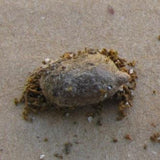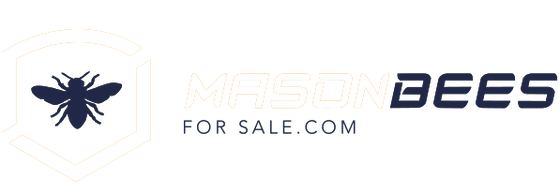Bee Pests and Solutions

In nature everything consumes, grows, reproduces and dies. We want our pollinators to do more growing and reproducing and less dying. To give bees the upper hand we’ve created this list of bee pests and what can be done to manage them.
*Spoiler alert*
The top way to manage pests involves cleaning out the bee house at the end of the season. (which is why we don’t recommend wood blocks here).
I am text block. Click edit button to change this text. Ut elit tellus, luctus nec ullamcorper mattis, pulvinar dapibus leo.
Ants: Ants will take advantage of bee larva as a food source. They will climb up the sides of sheds, posts and stakes to get to the bee house.

Solution: Make sure to hang your bee house at least three feet off the ground to prevent ants from reaching your bees.
- Chekered Flower Beetles (Trichomes ornatus): Females lay their eggs inside the bee nests and the beetle larvae prey on the developing bee brood and eat all the pollen provisions.

- Blister Beetles (Tricrania Stansburyi):These beetles lay their eggs in flowers and the new beetles hatch they wait on the flowers until a bee comes by, they then attach to the bee and hitch a ride back to the bee nest. The beetle will get into the sealed nest cell and kill the bee egg and eat the pollen provision. One blister beetle will develop in each cell.

Flour Beetles (Tribolium spp.): The female beetles will lay their offspring in the bee nests. They usually don’t harm the bees directly but it is important to keep the bee house clean to prevent them becoming to numerous.

- Carpet Beetles: Tend to scavenge inside of bee nests and can develop into a problem if the bee house is not cleaned out.

Solution: Make sure the house is properly cleaned out at the end of each season. Remove used reeds/ tubes and inspect filled tubes for signs of pests. If you see any Carpet Beetles while taking down your bee house simply remove them.
Problems:
- 1-Wood Peckers: Create holes in trees for tunnel nesting bees in the wild and are only doing their job eating your bees.
- 2-Nesting: If there is any empty space around the nesting materials birds may find the bee house a sublime location for their nest as well.
- 3-Eating: Birds may find the busy bee nest an ideal source of protein (and who could blame them?)
Solutions:
1-Cover the front of the house with chicken wire 3 inches away from the tubes to prevent woodpeckers from doing what comes natural.
2- Put rocks/ wood to fill in the empty space around nesting material or just cover the house with chicken wire like suggesting in solution #1.
3- If you have a bird feeder set up near the house separate the two. Consider taking down the feeder during Solitary bee season. Place Solitary bee house out of sight from watchful birds.
Chalkbrood is the most common disease that affects the blue orchard mason bee and other solitary bee. It is caused by several species of fungi in the fungal genus Ascosphaera family. All the spores are hazardous to bees and need to dealt with properly. A typical larval cadaver becomes brittle and ends and filled with powdery spores. Some cadavers do not develop spores and other just develop them in spots (black in color). The spores can be “picked up” by newly emerging bees as they brush past the sides of the tubes and can spread to new nesting sites and tubes easily.

Solution: Because chalkbrood is able to easily spread and infect an entire nest of bees it should be dealt with seriously. If any chalkbrood is found all of the tubes should be opened and checked for more. Drop the spores in a container of bleach and sanitize any contaminated equipment or exposed cocoons. To sanitize cocoons place in a mixture of equal parts bleach and water for 3o seconds. Then let air dry. Wipe/clean house with bleach and water. If using laminates be sure to sanitize any contaminated areas.
Ear wigs: Are opportunistic insects. They are attracted to bee houses because of the left over pollen. Generally they do not harm the bees although it is possible for them to kill a freshly laid egg that has not been sealed up yet but it is rare.

Solution: If you notice these pests on the tubes or around your bee house simply roll up a moist newspaper and put it in your bee house or attach it to the side. The Earwigs will be attracted to the moisture and you can simply toss them with the newspaper into your compost pile.
Mice/Rats/Squirrels/ Raccoons : If there is rodent feces in bee house and/or chewed tubes there is a good chance you’ve had rodents taking advantage of your bee house.

Solution: Place a wire screen over your house with 1/2 inch openings. Make sure your house is out of reach of raccoons by placing it 6 feet off the ground. Take down your house at the end of the season and store it in a shed or garage. If you have a lot of mice you can store inside a plastic bin with a few holes drilled in it. Additionally you may also want to set up some mouse traps in the area or get a cat.
Bears: If you live in area common to bears make sure to keep your bee house out of reach. When the growing season is over be sure to take the house down and put it in a shed or garage away from predators.

Humans:
- Children: Solitary bees are gentle and non aggressive. They rarely sting making them the ideal pollinating solution for families with pets and kids. However children are not always kind to the bees.
- Solution: Keep the house out of reach of small children and teach them not to move the house or pull tubes out of it.

Adults: STOP SPRAYING PESTICIDES!
- Leucospis Wasps: Insert their egg into the mason bee cocoon. They lay their egg on the prepupa (developing bee) and their larva will consume it.

Monodontomerus: Lay their eggs inside the cocoon of the the mason bees. These pests are a primary concern for exposed cocoon releasing. It is easy to tell if Monodontomerus has affected a cocoon because There will be multiple larva inside the cocoon.

- Chrysura (Chrysididae): Lays eggs in blue orchard bee nests; their offspring kill the developing bee and eat all it’s provision.

Sapyga: Lays eggs in the blue orchard bee nests; the offspring kill the developing bee and eat all its provision.

Solution: Make sure all tubes are sealed tightly as wasps will generally get into the sealed cells after find a crevice or crack to crawl into. This especially important when using laminates, card board tubes and paper straws. For more info. on nesting materials click here. Placing a pan with soapy water or vegetable oil directly under a black light will attract and drown the wasps and other emerging pests.
Pollen Mites: pollen mites are small clear mites that require a microscope to see. You can tell if your bee tubes are infested with pollen mites easily because of the orange “hairy” feces they leave behind. Pollen mites hitch hike into the bee nests and feed on the pollen collected by the bees. The mites will either kill the developing bee and eat the pollen or eat the pollen provisions which causes the bee to starve to death. The good news is that the pollen mites cannot move between cells in the tubes unless the partitions are damaged. They are not very common in climates with low humidity.

Solution: If pollen mites are present they can be treated with heat and dehydration during the larva stage. If they are unnoticed until the cocoon phase they can be easily dealt while cleaning out the bee house.
- Heat and Dehydration instructions: after nesting season is over simply raise temperatures to 32* C (81-90*F) and reduce humidity to 30-40% for a few days. Then allow the night time temperatures cycle to ambient until the bees pupate.
- During clean up instructions: Place equal amounts of cocoons to silicate sand in a rock tumbler for thirty seconds. Most of the mites will have attached themselves to the sand. Sift the sand and remove cocoons. Use new sand for each batch of cocoons (sand can be heated to kill the mites and then reused).
Stelis (cuckoo bee): Closely related to the blue orchard mason though it is smaller, moves more sporadic around the nest, and is unable to transport pollen. It lays its egg in the orchard bee nest (in the provision of pollen). The offspring kill the developing blue orchard mason bee and eat its provisions


cocoon photo by Steve Peterson
Solution: Remove these cocoons during clean up. Compared to the blue orchard bee the cocoon is firmer and has long stringier feces. The blue orchard bee cocoon is softer and has brown straight feces
Contact us
At Mason Bees, we are here to answer any questions you may have. Whether you are interested in any of our products for you own personal garden or for your orchard, we have a solution for you. Feel free to reach us directly and we will respond as soon as possible.
Phone number: 8016489035
Email: clinton@masonbeesforsale.com
Address: Mason Bees LLC, 10090 N HIGHWAY 38, DEWEYVILLE UT 84309, United States
Get Mason Bees
Boost your garden's productivity by providing a Mason Bee House for peaceful, non-stinging bees. As bee populations struggle, home gardeners can play an important role in attracting bees and other pollinators
News & Updates
Sign up to get the latest on sales, new releases and more …
© 2025 masonbeesforsale.com. Designed by Out of the Sandbox. Powered by Shopify

